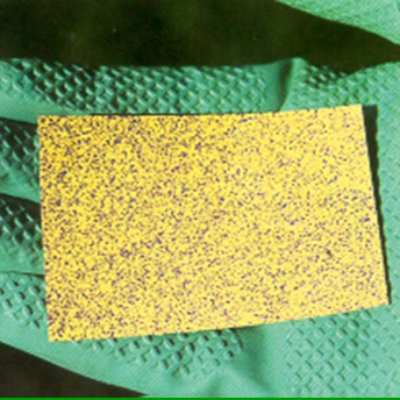07/03/2014
Droplets diameter and treatment

When making phytosanitary treatments, the aim is to obtain a good coverage.
A good answer to this need is treatment at low volume.
A treatment is called at low volume when the average droplet size is around 100/150 microns; this is therefore the ideal size for optimum coverage. Larger droplets (200/400 microns as those obtained with a treatment performed with knapsack pump or with tubes) can produce the phenomenon of “runoff”: they are heavier and tend to fall to the ground, partially invalidating the treatment and producing pollution.
In case of smaller drops (about 50 microns) obtained with the ULV (ultra low volume) treatment, the product, when mixed with water, may evaporate in hot climates and accentuates the phenomenon of “drift”.
Moreover, with the ULV is very important to use the correct speed of treatment to avoid spilling too much product, as it is more concentrated.
A treatment at low volume is made using a mist sprayer; in knapsack mist sprayer, the fan generates an air volume at high speed that is directed to the throwing tube and to the nozzle (where present) placed at its output.
If the mist sprayer is equipped with a suitable motor and the output system has been properly designed, the air invests and nebulizes the product which is transported to the area to be treated.
The micronized droplets land on the surface making an almost total coverage of the cultivation.
Of course, the more the homogeneity of the droplet size approaches to their average size, the better is the distribution obtained.
For against, the lack of nozzle or a very irregular output, typical of some low-cost machines on the market, may worsen the quality of the treatment.
In fact, to get the best properties of the treatment the leaf should not be “washed” but covered with micro-droplets.
Furthermore, the air of the mist sprayer moves the leaves (this does not happen in the use of knapsack pumps) and allows the treatment on both sides. A method for verifying the effectiveness of the coverage is to place between the leaves a idrosensibile card which has the peculiarity of changing color upon contact with water.
The Cifarelli M1200 mist sprayer guarantees a micronization average of 100 microns, which is considered optimal for the treatment and thanks to the power of its engine, ensures an effective coverage (30-40 drops / cm2) up to a distance of 12/13 meters.
These results arise from the study and the experience of Cifarelli in mist sprayers and are certified by the tests Enama of the M1200 mist sprayer.
The ENAMA(Ente Nazionale Meccanizzazione Agricola), a member of ENTAM, performs on a voluntary basis, accredited security checks and functional testing of agricultural machinery and components in specialized testing centers. The certificates are then published and disclosed in appropriate test reports, allowing for product qualification and ensuring to all parties involved in the spinneret (manufacturers, retailers and farmers) the compliance with the provided rules.

_300x300.png)

_300x300.png)